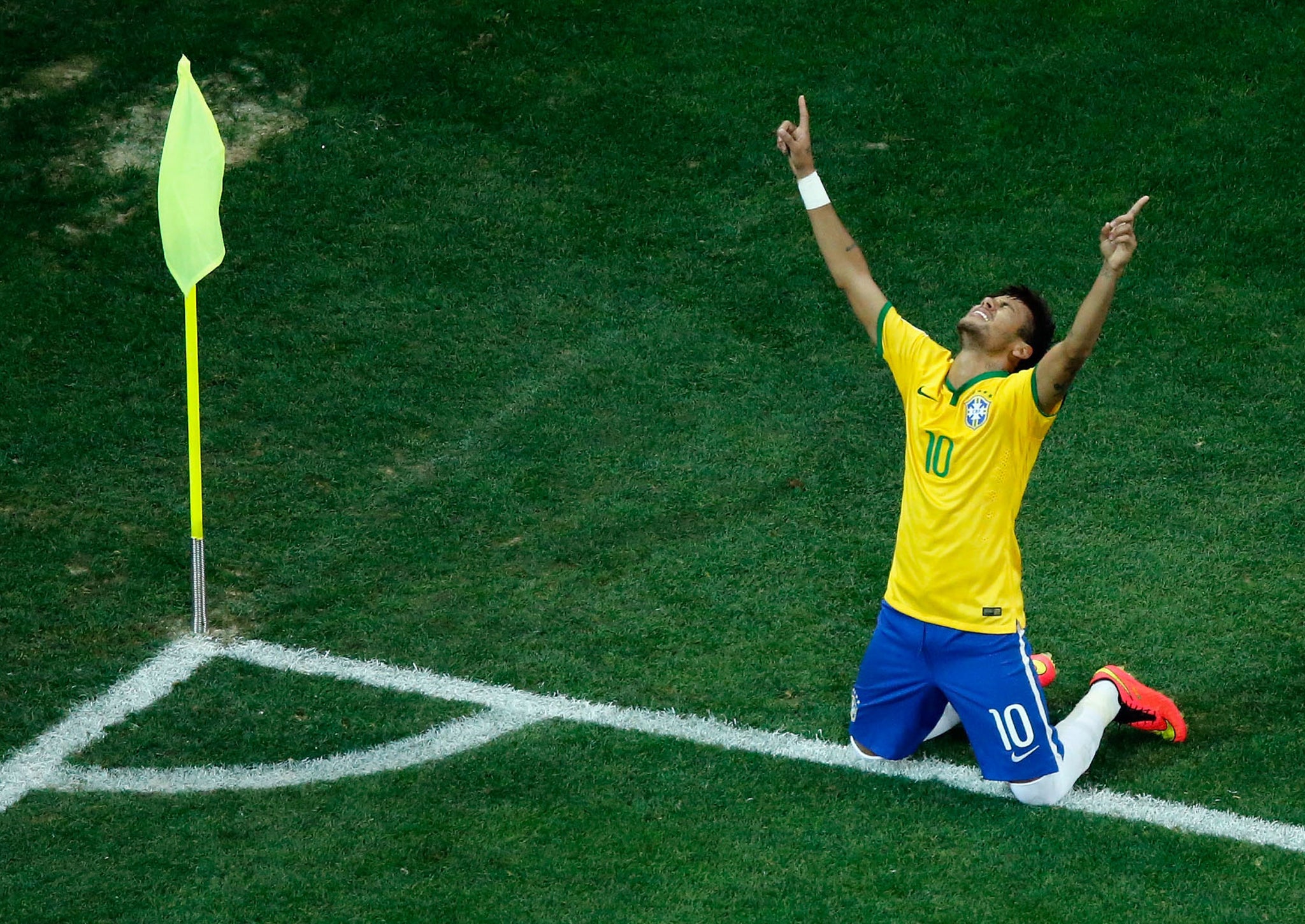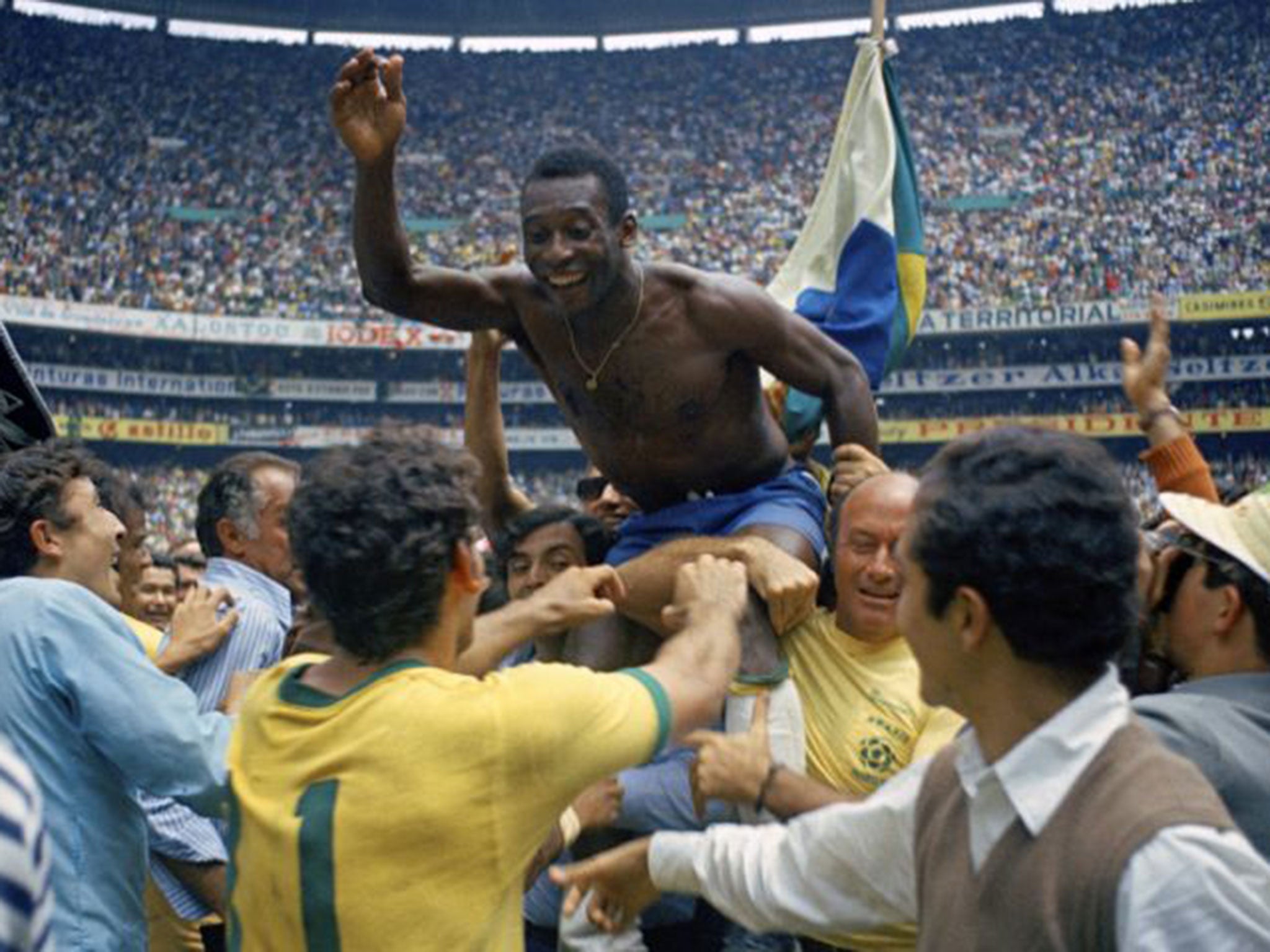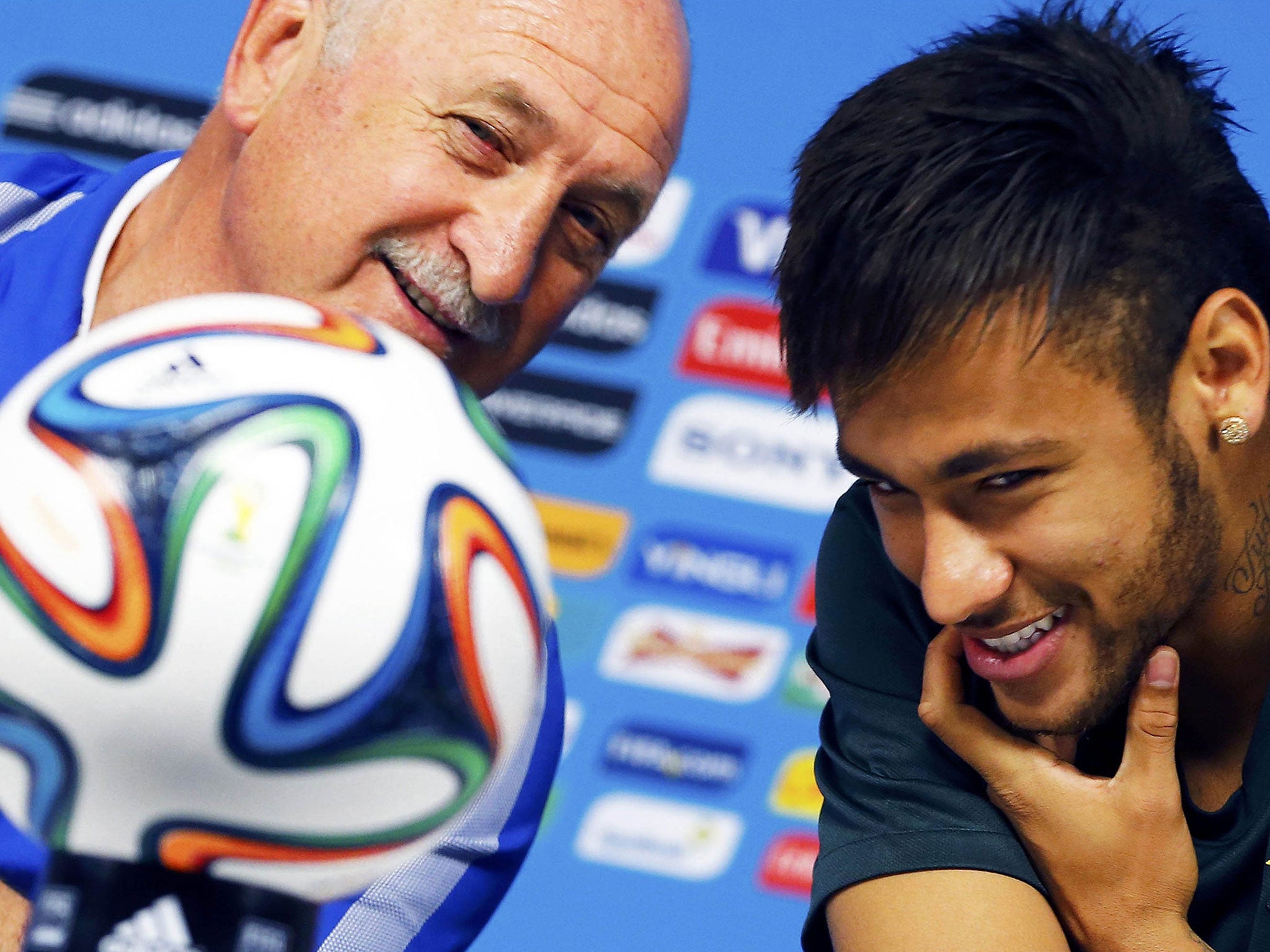World Cup 2014: Is Neymar as good as Pele?
Moulded at the same club side, they are well brought up and humble, but can Neymar, Brazil’s latest No 10, be compared with the country’s favourite son?

Your support helps us to tell the story
From reproductive rights to climate change to Big Tech, The Independent is on the ground when the story is developing. Whether it's investigating the financials of Elon Musk's pro-Trump PAC or producing our latest documentary, 'The A Word', which shines a light on the American women fighting for reproductive rights, we know how important it is to parse out the facts from the messaging.
At such a critical moment in US history, we need reporters on the ground. Your donation allows us to keep sending journalists to speak to both sides of the story.
The Independent is trusted by Americans across the entire political spectrum. And unlike many other quality news outlets, we choose not to lock Americans out of our reporting and analysis with paywalls. We believe quality journalism should be available to everyone, paid for by those who can afford it.
Your support makes all the difference.The Santos football legend they used to call O Gerente – “the director” – has a perspective on Brazilian football genius like none other. He is Lima – Antonio Lima dos Santos – the one-time lung of the mighty club side which amazed the world in the 1960s. More significantly for a football world which wonders whether Neymar is blessed with as many gifts as Pele, he is the man who coached the former to greatness and roomed with the latter for 11 long years.
He has reasons to flinch at the sight of an Englishman, wandering up to him in the Santos club’s Memorial de Conquistas museum. Ours is the country where he played in his only World Cup – the disastrous one by Brazilian standards in which they were kicked to defeat by Hungary and Portugal at Goodison Park and went home. “Europeans like to remember 1966 but Brazilians don’t!” he says through a translator. “I am still wondering what happened.”
But Lima’s eyes flicker as he traces the course of his years with the two giants of this club, whose metal sculptures stand opposite each other in the museum. He observes, matter-of-fact, that in one sense the new prodigy already is better than the man they called O Rei. “Neymar has something that even Pele doesn’t,” Lima says. “The speed of his feet and the way he can move the ball.”
His awareness of Pele’s immutable place at the heart of the nation’s football history seems to make him row back from too many comparisons. “No, no. You can’t compare any player with Pele,” he says. “Because you will never find another one like Pele.”
Yet the characteristics of the greatness of the two players do invite comparison. Pele lived the high life in the end and Lima remembers the Mercedes he drove – “He won the Mercedes!” – in an era when the players enjoyed wealth. But Edson Arantes do Nascimento always exuded the humility which, by every available account here, is at Neymar’s core. Lima also remembers the car Neymar drove before he left for the bright lights of Barcelona. “He had a Mini Cooper. It was a beautiful car. A Mini Cooper, yes? A great car!”
The friendship with Pele, who was 20 when Lima met him, grew into one of deep affection on many Santos tours. His memories of how “Pele used to think he was a good guitar player” remain vivid. “The problem was that the melody would come during the night. So at 3am he was trying to play. He would say to me: ‘It’s nice. A good song…!’” His relationship with Neymar – on whom Brazil pins its hopes against Mexico in Fortaleza today – has been more intense because Lima has shaped the way the boy plays.
When they first met, Neymar was a 13-year-old from Mogi da Cruzes, in Sao Paulo, scouted at a futsal tournament and signed by Santos on a salary of £120 a week to play five-a-side football – because the Under-13s didn’t have an 11-a side team. Everyone knew the boy was special but Lima knew from the day of a game in 2006 against the Sao Carlense team, from Sao Paulo state, that he had to talk the boy out of his obsession with being a striker. “We were losing 1-0 so I moved him deeper, towards the middle,” he recalls. “Neymar made two goals and we won the game 4-1. He was 14 at the time but by changing him it changed everything. He became the more complete player.” Pele had no such adjustments to make. He was a goalscorer, plain and simple, identified by the age of 13 as the star who was a 17-year-old when he first set a World Cup alight, scoring two goals in the final as Brazil beat Sweden 5-2.

Neymar struggled to accept the change he was being asked to make, according to testimony gathered by the Italian biographer Luca Caiola in his impressive book Neymar, the Making of the World’s Greatest new Number 10. Caiola relates how a tearful Neymar told Lima: “No, Profe. You want to take me out of the area; you don’t want me to score.” But the reasons stemmed from the one aspect of the Neymar package which has made his ascent to Pele’s heights a very arduous one. His physique. Lima simply felt the teenager he was too puny to work as a striker, fighting off the local so-called scrapping gatos del futebol (“football cats”) and it was a long mission at Santos to bulk him up. “It was always an issue,” says Lima. “He was really thin so we had to change the nutrition… to help him gain weight. A nutritionist in Sao Paulo created a plan for him. We think this has helped him at Barcelona.” Neymar put on seven to eight kilos of muscle mass at that time.
The issue resurfaced three years later, when Vanderlei Luxembourgo had taken over the Santos first team which Neymar had just broken into and dropped him to the bench, describing him as a “file de borboleta” (“stick insect”) who needed to be protected. There were more hypercalorific diets to build a further 3kg of muscle mass.

Pele had never had it this hard. And he also had the versatility with his feet which, in those formative years, right-footed Neymar lacked. Lima tells now how his young charge “would always look for me to say: ‘How can I be better?’ I would always tell him to work on his left foot. And he would.” He grins at the reminder that it was this weapon which equalised Croatia’s first goal in Sao Paulo, in last Thursday’s 3-1 win.
“Their attitude is the thing that is most similar,” Lima says of Neymar and Pele. “Their vision of the game – yes you can compare them. But the attitude is the thing that is most similar. Neymar lived with his family the whole time he was here. He would take the bus to training [for years]. His father was a traffic warden. They were a good family. He was well brought up...”
Their differences stem from their rise to fame coming a near lifetime apart. Neymar’s Mohican belongs to a noisy era of individualism and personality. He hasn’t always been an angel, either. Caiola relates an episode, in September 2010, when Neymar was denied the chance to take a free-kick in a game against Atletico Brasileroa and behaved dreadfully, ultimately going into “ball-hogging” mode. Brazil was aghast. Neymar has also now sought his fortune elsewhere, while Pele always stayed at Santos “because nobody had the money that Santos wanted for him,” Lima says.
Tostao, another member of that 1966 World Cup squad, tells Caiola that Neymar’s individualism and theatricality on the field are characteristics which keep him below Pele’s level. “O Rei, like Lionel Messi now, had an incredible ability to get to the crux of a move which Neymar does not,” he says. “I never saw Pele overdo it with dribbling or waste time dribbling for the sake of it. He flashed past his opponents with the sole aim of getting to the goal. Just like a great writer who in a few words says everything there is to be said, whereas others fill pages and pages but say little or nothing.”
Lima just hopes that Luiz Felipe Scolari will give Neymar the freedom to play his part to the full. He implies that Scolari is restricting him by deploying him as a left-sided player, the position he started against Croatia. “The player of the talent Neymar has can move everyone,” he says. “He should not be playing on the left. No, let the boy play. Don’t hold him to a position. When you put him in just one position you make it better for the opposition.”

Meaningful Neymar comparisons are premature, of course. The last great hope of Santos was Robinho – heralded as the “new Pele” when he left for Real Madrid, only to fail at Manchester City and come home. “I don’t know what happened when he moved to Europe because he put on a lot of weight and lost speed,” Lima says of Robinho. “It happened with Romario and Ronaldo and it was a problem. This change to another country and everything seemed to affect him.”
It will be a decade or more before history can decree whether these two sons of Santos stand shoulder to shoulder and help settle arguments about which of the two was best. But at a time when this vast, struggling nation looks for hope, there is finally an individual with Pele’s capacity to deliver some of it at this World Cup. “Yes. Neymar has the power to move people,” Lima reflects. “He has always done that.”
Join our commenting forum
Join thought-provoking conversations, follow other Independent readers and see their replies
Comments